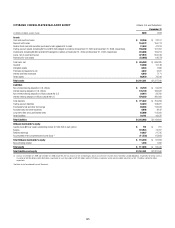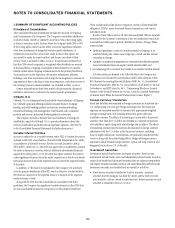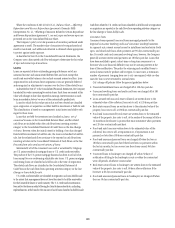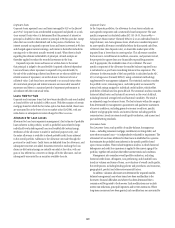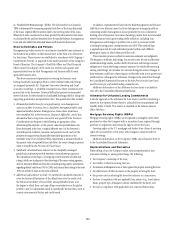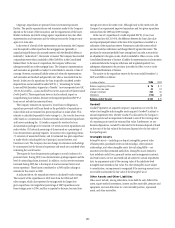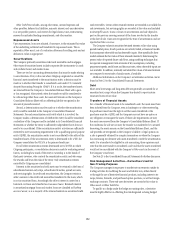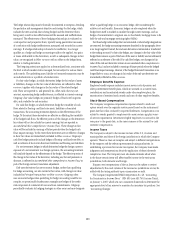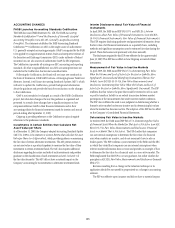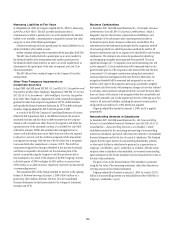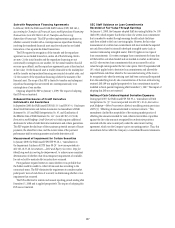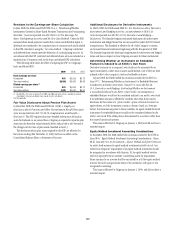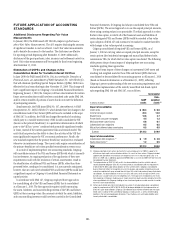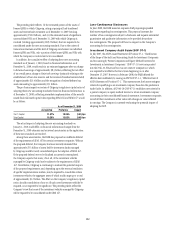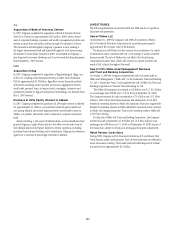Citibank 2009 Annual Report Download - page 144
Download and view the complete annual report
Please find page 144 of the 2009 Citibank annual report below. You can navigate through the pages in the report by either clicking on the pages listed below, or by using the keyword search tool below to find specific information within the annual report.134
The Company treats interest and penalties on income taxes as a
component of Income tax expense.
Deferred taxes are recorded for the future consequences of events that
have been recognized for financial statements or tax returns, based upon
enacted tax laws and rates. Deferred tax assets are recognized subject to
management’s judgment that realization is more likely than not.
See Note 11 to the Consolidated Financial Statements for a further description
of the Company’s provision and related income tax assets and liabilities.
Commissions, Underwriting and Principal Transactions
Commissions, underwriting and principal transactions revenues and related
expenses are recognized in income on a trade-date basis.
Earnings per Share
Earnings per share (EPS) is computed after deducting preferred-stock
dividends. The Company has granted restricted and deferred share awards
that are considered to be participating securities, which constitute a second
class of common stock. Accordingly, a portion of Citigroup’s earnings is
allocated to the second class of common stock in the EPS calculation.
Basic earnings per share is computed by dividing income available to
common stockholders after the allocation of dividends and undistributed
earnings to the second class of common stock by the weighted average
number of common shares outstanding for the period. Diluted earnings per
share reflects the potential dilution that could occur if securities or other
contracts to issue common stock were exercised. It is computed after giving
consideration to the weighted average dilutive effect of the Company’s stock
options and warrants, convertible securities, T-DECs, and the shares that
could have been issued under the Company’s Management Committee Long-
Term Incentive Plan and after the allocation of earnings to the second class
of common stock.
Use of Estimates
Management must make estimates and assumptions that affect the
Consolidated Financial Statements and the related footnote disclosures. Such
estimates are used in connection with certain fair value measurements. See
Note 26 to the Consolidated Financial Statements for further discussions on
estimates used in the determination of fair value. The Company also uses
estimates in determining consolidation decisions for special-purpose entities
as discussed in Note 23. Moreover, estimates are significant in determining
the amounts of other-than-temporary impairments, impairments of goodwill
and other intangible assets, provisions for probable losses that may arise
from credit-related exposures and probable and estimable losses related to
litigation and regulatory proceedings, and tax reserves. While management
makes its best judgment, actual amounts or results could differ from those
estimates. Current market conditions increase the risk and complexity of the
judgments in these estimates.
Cash Flows
Cash equivalents are defined as those amounts included in cash and due
from banks. Cash flows from risk management activities are classified in the
same category as the related assets and liabilities.
Related Party Transactions
The Company has related party transactions with certain of its subsidiaries
and affiliates. These transactions, which are primarily short-term in nature,
include cash accounts, collateralized financing transactions, margin accounts,
derivative trading, charges for operational support and the borrowing and
lending of funds, and are entered into in the ordinary course of business.



